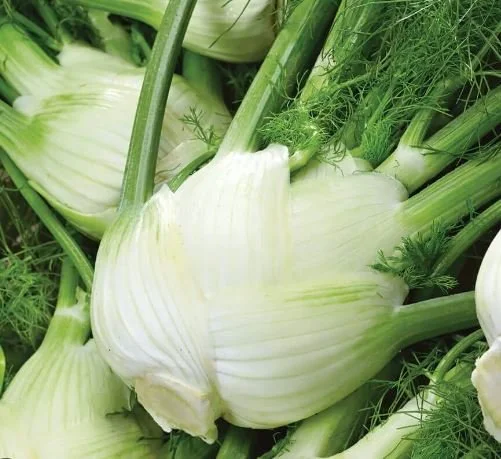Fabulous Fennel
Last week one of my favorite cool-season vegetables arrived at the market: fennel. This is one of the most amazing vegetables that has multiple culinary and medicinal uses as well as a natural dye and insect repellant. Every part of the plant, including the flowers can be eaten raw or cooked.
Fennel is a flowering perennial herb with a bulbous stem base that is often used as a vegetable. It is in the same family as carrots, sharing similar feathery leaves with flower heads sporting umbels from which the fruits emerge.
Most people are familiar with the dried fennel fruits, often erroneously labeled as seeds, which are the predominant flavoring used in Italian sausages. The anise flavor from fennel fruits is also one of the three main flavoring ingredients used in absinthe, a popular alcoholic beverage that originated as a medicinal drink in the 18th century.
But before it became a popular drink ingredient, fennel was used by the Greeks and Romans as an insect repellant and a natural dye for fabrics, quite possibly making it the earliest form of bug repellant clothing.
As many of you braved the crowds for the annual Maryland Sheep & Wool Festival last weekend, you might have noticed a renaissance of natural dyeing. There’s a reason I hit up my fellow vendors for all of the fennel fronds the customers ask to be removed. It saves them from having to haul home and dispose of the discarded material and it saves me from having to grow or purchase natural dyestuffs for use in my hobby of dyeing the wool from my sheep. The pungent sweet aroma helps to mask the dank odors of wet wool.
But this time of year it’s that swollen base of stems that form an overlapping mass that becomes the heart of everything. Used raw as a substitute for celery in chicken salad or thinly shaved and used in salads. One of my favorite simple recipes is shaved fennel with feta cheese, Persian cucumbers, pesto, and pistachios, most of which are easily purchased at the farmers market.
Cut into wedges and drizzled with olive oil, the bulbs stand up to roasting which brings out a nutty flavor. Sliced and sauteed, the fennel caramelizes into a melt-in-your-mouth subtleness. Looking for a quick meal? Sautee sliced fennel in butter, lemon juice, and capers to toss with pasta. Dinner is done in ten minutes. If you want to get fancy, sprinkle some of the fresh fennel leaves on top with a scattering of freshly grated hard cheese such as Parmesan or Pecorino Romano.
While fennel tea continues to be used as a digestive aid, it’s medicinal powerhouse is its mild numbing effect. Listen up all you parents of teething babies. Take apart the individual stems separating each with the wide flat fan at the bulb which fits perfectly into the mouth of a teething toddler. The stem acts as a handle of sorts. This is the least expensive and most natural relief you’ll ever find for you kiddos. And when they’ve gnawed it down to the stringy fibers simply toss the remains in your compost bucket.

